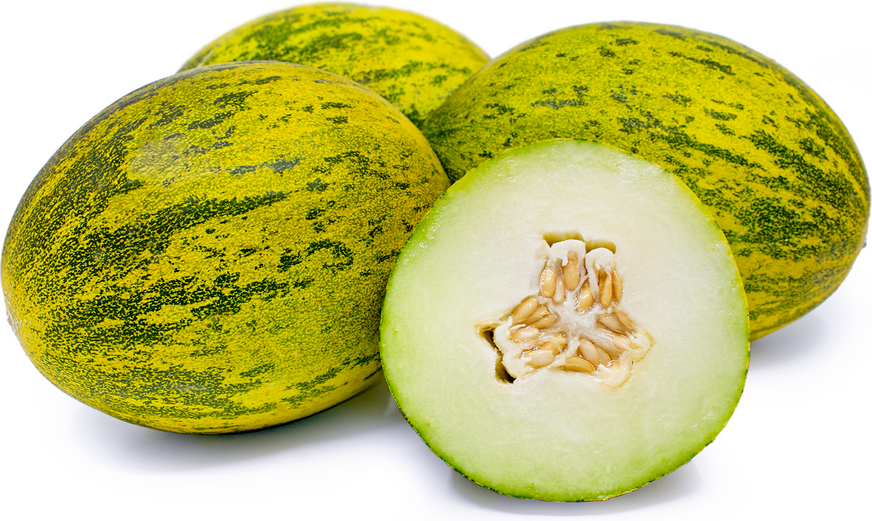


Lambkin Melons
Estimated Inventory, ea : 0
Description/Taste
Lambkin melons are oblong and shaped like an American football. They measure around 16 centimeters long and 13 centimeters wide and weigh up to 4 pounds when mature. Their yellowish-green rinds are covered in a mottled dark green giving the melons a variegated appearance. The smooth rinds are thin, covering an aromatic, pale green flesh, with a small central seed cavity. Lambkin melons are juicy and offer a very sweet, refreshing flavor.
Seasons/Availability
Lambkin melon are available in the summer and through the fall and winter months.
Current Facts
Lambkin melons are a hybrid Spanish variety, referred to as a Christmas melon, and are botanically classified as Cucumis melo. They are related to the canary melon and are known as a piel de sapo-type, or ‘toad skin’ for their mottled green rind. The early maturing melons are popular with growers because they have a very long shelf-life, lasting well into the holidays, earning the seasonal moniker and nicknames like ‘Santa Claus melon’. Lambkin melons are a new variety, gaining in popularity among home growers, small farms and chefs.
Nutritional Value
Lambkin melons are a rich source of vitamin C, dietary fiber, and potassium. They are also a good source of iron and calcium. The sweet melons measure 14 degrees on the Brix scale, the measurement for sugar and nutrient content in the fruit. For most melon varieties, this an ideal measurement.
Applications
Lambkin melons are most often used raw, with the rind and seeds removed, and cut into slices or bite-sized pieces. Enjoy as is or add to fruit or green salads and pair well with bitter greens and other summer fruits. Use in summer salsas with jicama, cucumber, basil, or mint. Wrap pieces in prosciutto for hors d’oeuvres or toss into a chilled chicken salad. Puree the flesh for ice cream or sorbets or add to beverages or smoothies. Lambkin melons have a very long shelf-life and can be stored at room temperature in a cool place for up to month or refrigerated for up to six months.
Ethnic/Cultural Info
The early-season Lambkin melons were awarded the All-American Selection in 2009, a designation given to new, unsold cultivars. The All-American Selection organization trials new products for home gardeners and commercial growers.
Geography/History
Lambkin melons were developed in Taiwan by the Known-You Seed, a company well-known for their melon hybrids. They were first introduced in the late 2010s through partnerships with seed companies in the United States. Piel de sapo type melons originated in Spain and are widely grown throughout the Mediterranean region. Lambkin melons may be spotted at farmer’s markets in Southern California, Minneapolis and Utah, or in home gardens.
Recipe Ideas
Recipes that include Lambkin Melons. One
| Ice Cream Nation |
|
Piel de Sapo Melon Sorbet |




